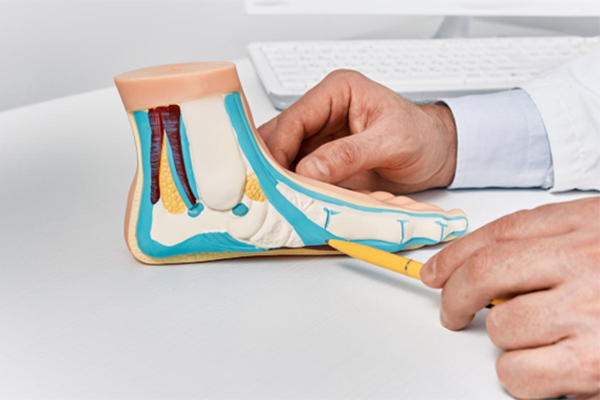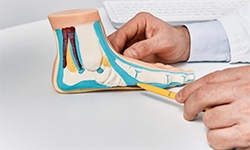
You might not think much of flat feet, but for many people, they’re the hidden cause of chronic foot, ankle, and even knee pain. If your arches have collapsed and conservative treatments haven’t helped, surgery may be the best step forward. Let’s explore how flatfoot surgery works and why it could be the solution you’ve been searching for.
Understanding Flatfoot Deformity
Flatfoot, or fallen arches, occurs when the arch of the foot collapses, causing the entire sole to come into contact with the ground. This condition can be inherited or may develop gradually due to injury, arthritis, or wear and tear. Left untreated, flatfoot can lead to misalignment in the foot and ankle, resulting in pain, swelling, fatigue, and difficulty walking. As the alignment of the lower limb changes, the imbalance may place additional stress on the knee and hip joints, potentially causing discomfort, instability, or contributing to chronic knee and hip issues.
When Is Surgery Necessary for Flat Feet?
Not all flat feet require surgery. Many patients find relief with custom orthotics, physical therapy, or bracing. When these options fail and pain continues to limit your mobility or quality of life, surgery may be recommended. A specialist with experience in foot conditions would be best equipped to assess your situation through a physical exam and imaging to determine the most appropriate surgical approach.
What Happens During Flatfoot Surgery?
Flatfoot reconstruction surgery is personalized based on the severity of your deformity. The procedure may involve realigning bones, repairing or transferring tendons, and using grafts or implants to rebuild the arch. Depending on your case, additional issues like tight calf muscles may be corrected. In the most severe cases, fusion procedures are required to realign the foot.
Recovery: What to Expect After Surgery
Recovery typically involves a period of non-weight-bearing activity, followed by gradual rehabilitation and physical therapy. Most patients are able to return to walking in a few months and enjoy long-term relief from pain. A rehabilitation plan will be recommended that supports your healing and gets you back on your feet—stronger than ever.
Step Toward a Better Future
Living with flatfoot pain doesn’t have to be your reality. If conservative treatments haven’t worked, flatfoot surgery could provide lasting relief and restore your natural step. Schedule a consultation today with Dr. Dean, to learn whether flatfoot surgery is the right path for you.
AUTHOR: Dr. Daniel Dean is a board-certified and fellowship-trained foot and ankle orthopaedic surgeon. He treats all musculoskeletal pathologies of the foot and ankle in adolescent and adult patients. He has specialized training in total ankle arthroplasty, sports injuries, flatfoot, complex fractures, and minimally invasive techniques in bunion correction.












